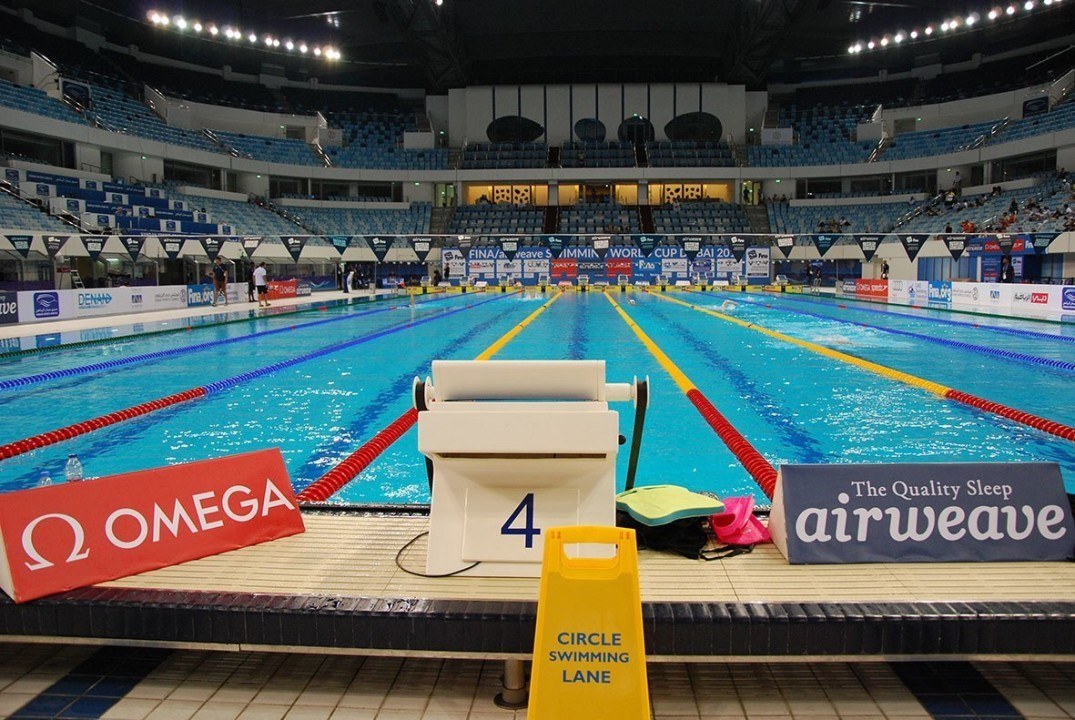Courtesy: TritonWear, a SwimSwam partner.
A fast start sets up for a fast length. There are 3 main parts to any swimming start: the blocks, the flight, and the underwater. Perfecting your technique in each of these components will contribute to a faster swimming start.
1. The blocks. This phase of your start begins with your ready stance on the block, to the starting gun going off, and until your toes leave the block.
The ready position on the blocks – having a balanced stance, with good weight distribution – is a big factor in how fast and how powerful your take-off will be. A front weighted start tends to lead to a faster start time, while a rear weighted start tends to provide more forward velocity.
Keep a slight bend in your knees with your hips higher than your shoulders and your fingers and toes gripping the edge of the block. This position provides better support and added power for your take-off.
If you’re using the kick plate, the ideal distance of the plate is one that allows your back leg to bend at a 90 degree angle. This position allows for the most effective weight distribution to engage the legs and generate the most propulsion off the blocks.
Engage your core and use your arms to increase the explosiveness of your dive and get into a streamline faster.
2. The flight. The phase where you are in the air, from the moment your feet leave the blocks until you enter the water.
During this phase, you want to focus on getting into a streamline position as quickly and as efficiently as possible, so you’re able to carry the momentum of your take-off into the water.
A tight streamline in the air is also essential for a clean entry, minimizing the drag created from entering the water, as well as ensuring you don’t land too deep into the water or too high on the surface. Beginning your underwater in either of these depths are inefficient and will lead to added drag.
3. The underwater. This phase begins when your fingers enter the water and ends at the breakout.
A great swimming start isn’t just about getting off the blocks the fastest, or hitting the water the farthest. It’s also, perhaps most importantly, about being able to maximize the propulsion generated from the starts by carrying over that momentum and retaining as much speed into the underwater phase.
The key is to maintain a tight streamline after the entry. The less space you take up, the less drag you create. Begin your dolphin kicks or breaststroke pullout before you start slowing down and use the propulsive force of your kicks to retain as much acceleration.
Timing your first stroke correctly is also crucial to ensure you continue to capitalize on your momentum. Breaking out too early or too late not only makes you lose out on this acceleration, it also creates additional drag that will slow you down.
Learn more about how you can improve different areas of your swim such as stroke technique, turns, and more, in this comprehensive guide on How to Swim Faster.
VISIT THE TRITONWEAR HQ
Follow us on Instagram
Like us on Facebook
Follow us on Twitter
TritonWear is a SwimSwam partner.

